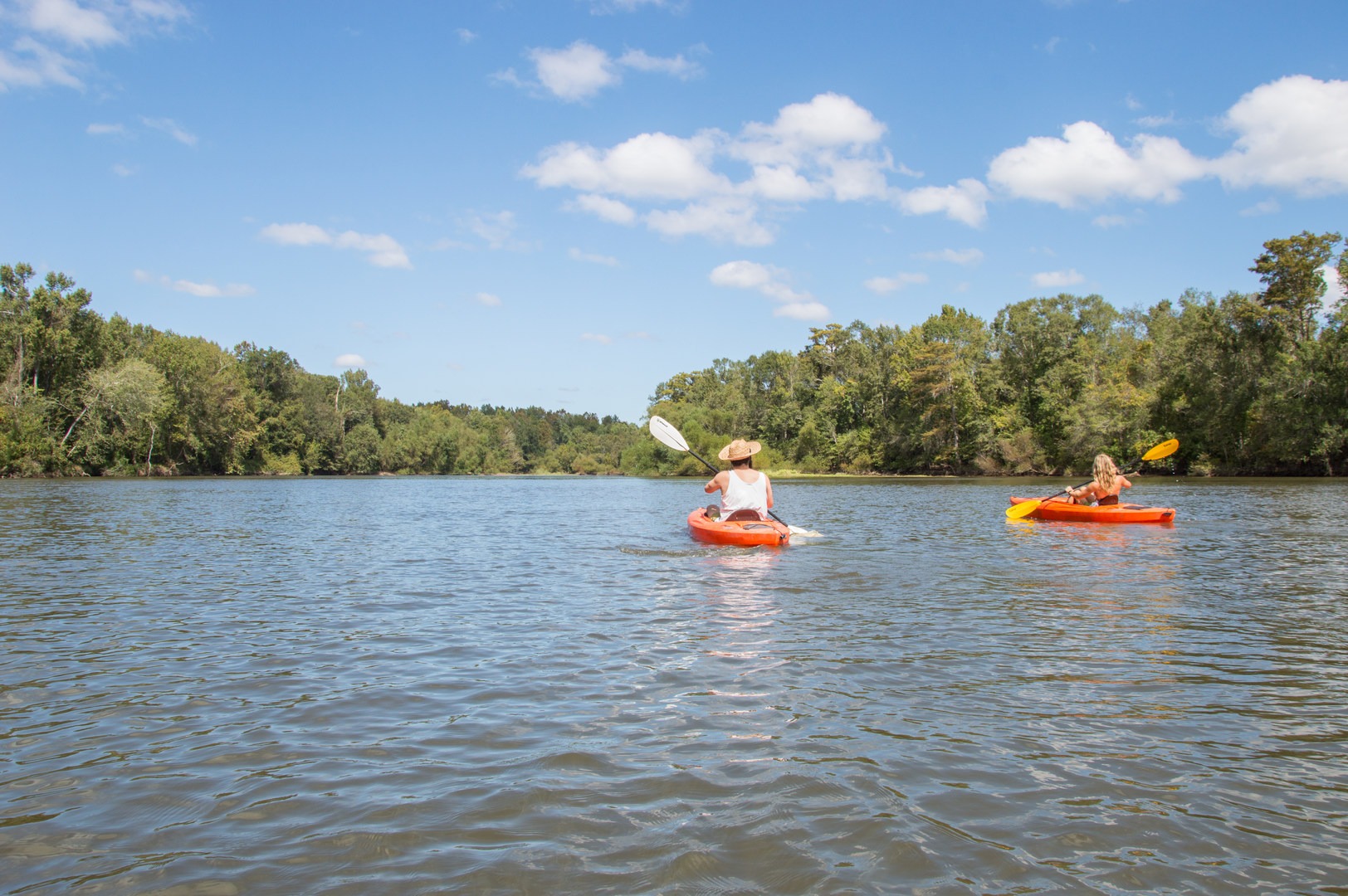You are here
The Santee River forms one of the largest deltas on the Atlantic Seaboard. It's broad, silty plain was recognized long ago as fertile soil, and it has been planted extensively for rice and other crops since colonial times. Nature has been allowed to reclaim much of the delta region, however, and it is once again a hot spot for biodiversity. Where plantations, farmlands, and war fortifications once lay, dense forest and marsh have regrown along the Santee's shores near the coast. There are now few roads leading to its banks, so the river grants access to some of the most remote terrain in the Lowcountry today. You will see few signs of civiliation after paddling just a short distance on the river or one of its tributaries in the swamplands.
The Santee River splits into two channels about 10 miles before emptying into the Atlantic, forming what are called the North and South Santee Rivers, separated by the 2-mile-wide Cedar Island in between. The South Santee borders Francis Marion National Forest, within which are a few public access points where you can begin your journey. A good place to start is on Wambaw Creek in the national forest. Public boat launches are available farther upstream as well, but they are not as convenient from the main road. Wambaw Creek is actually a designated wilderness area and water trail. From the canoe launch, you can paddle either upstream into the wilderness of tupelo-cypress swamp or downstream to reach the South Santee River. Once on the river, you can venture in either direction and find numerous backwaters and tributaries awaiting exploration. You may encounter motorboats in the main channel, but in the creeks you are likely to find total solitude. Wildlife is abundant throughout. You may see turtles, otters, alligators, and certainly lots of birds.
An interesting historical site lies upstream on the South Santee from Wambaw Creek's mouth. This is Battery Warren, an earthen fort from the Civil War. It was constructed by the Confederates for defense against Union forces that might use the South Santee as an invasion route. You can paddle up to the fort, where several embankments still remain, and walk an interpretative trail through the site.
If you wish to do an overnight trip, a few designated campsites are available along roads in the national forest. Dispersed camping is also allowed in most areas, so you can pack your camping gear with you in the boat and sleep in the swamp. In warmer months, be prepared for heat and biting insects. Fall and early spring are generally the best seasons for camping, when bugs go away and nighttime temperatures cool way down, but without the frost of winter. In these especially remote areas, be sure to Leave No Trace by minimizing campfire impacts and packing out all your own trash.
Logistics + Planning
Current Weather: Powered by Dark Sky
























Comments
Sign In and share them.